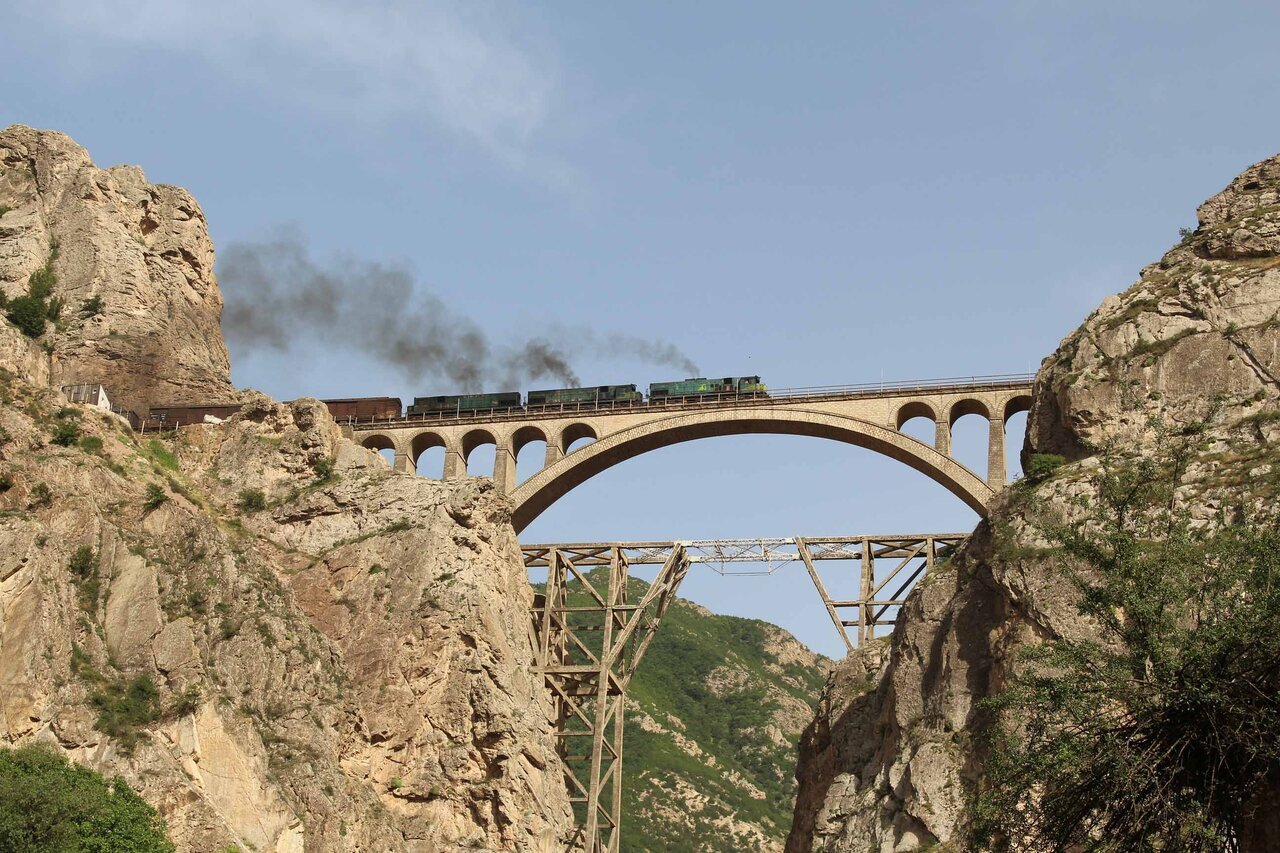A monument of engineering and history, Veresk turns 89

TEHRAN - Veresk Bridge, one of Iran’s most iconic engineering feats of the 20th century and a vital link in the Trans-Iranian Railway, has reached its 89th anniversary.
Located in the highlands of Veresk village, some 27 kilometers south of Pol-e Sefid in Mazandaran province’s Savadkuh county, the bridge stands as a testament to international collaboration and technical ingenuity.
Commissioned during the reign of Reza Shah Pahlavi, Veresk Bridge was inaugurated on May 6, 1936 (16 Ordibehesht 1315) in a ceremony attended by the monarch himself.
It is said that to dispel public fears regarding the bridge’s strength, Reza Shah ordered foreign engineers and their families to stand beneath the structure as the first train crossed.
Constructed at an altitude of 110 meters (now reduced to about 106 meters due to sediment and rising water levels), the bridge spans a 66-meter arch over a deep gorge, connecting the Tehran–North railway. Built with primitive tools by a multinational workforce—Swiss, Italian, German, Austrian, and Danish—the bridge was designed and constructed by the Danish firm Kampsax, which offered a 70-year guarantee on its durability.
The chief engineer, Austrian Walter Aigner, is buried in Veresk per his request, and a memorial stands near the bridge in honor of the laborers who lost their lives during its construction and the excavation of nearby tunnels.
Veresk Bridge earned the moniker Pol-e Piroozi or “The Bridge of Victory” during World War II when Iran served as a crucial supply route for the Allied forces. The railway played a significant role in transporting troops and materials to the Soviet Union, helping counter the German siege on the Eastern Front.
Recognized for its historical and strategic importance, the bridge was inscribed on Iran’s national heritage list in 1977. More recently, in 2021, the entire 1,394-kilometer Trans-Iranian Railway—of which Veresk Bridge is a crown jewel—was designated a UNESCO World Heritage site during the 44th session of the World Heritage Committee in Fuzhou, China.
The Trans-Iranian Railway stretches from the Caspian Sea’s southeastern shores near Torkaman Port, winding through the Alborz Mountains via Firoozkuh, traversing the plains of Qom and Arak, piercing the Zagros highlands in Lorestan, and ultimately splitting into two branches at the Persian Gulf’s Khoramshahr and Imam Khomeini ports.
As it turns 89, Veresk Bridge remains not only a critical piece of Iran’s transport infrastructure but also a symbol of resilience, innovation, and historical continuity.
AM
Leave a Comment